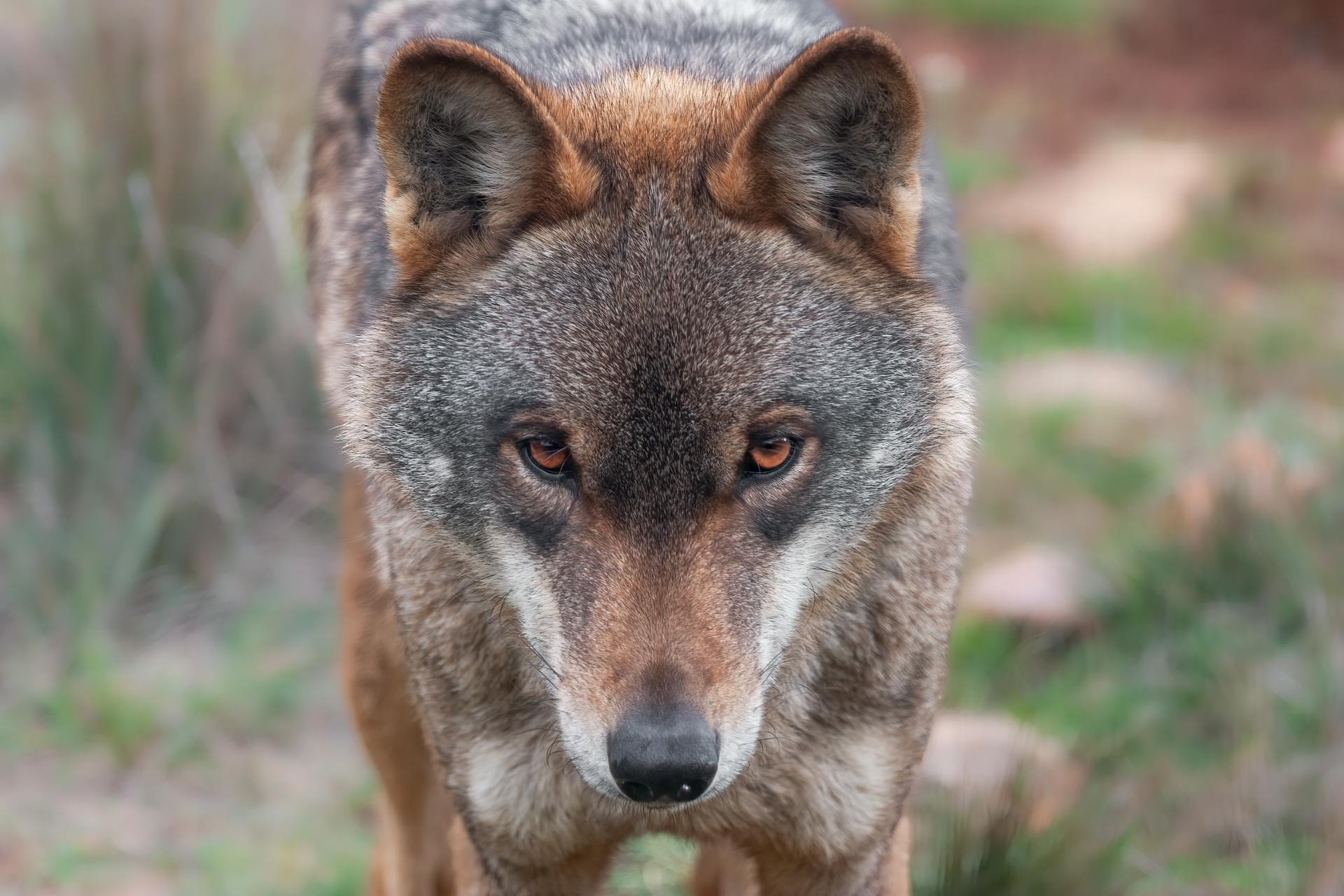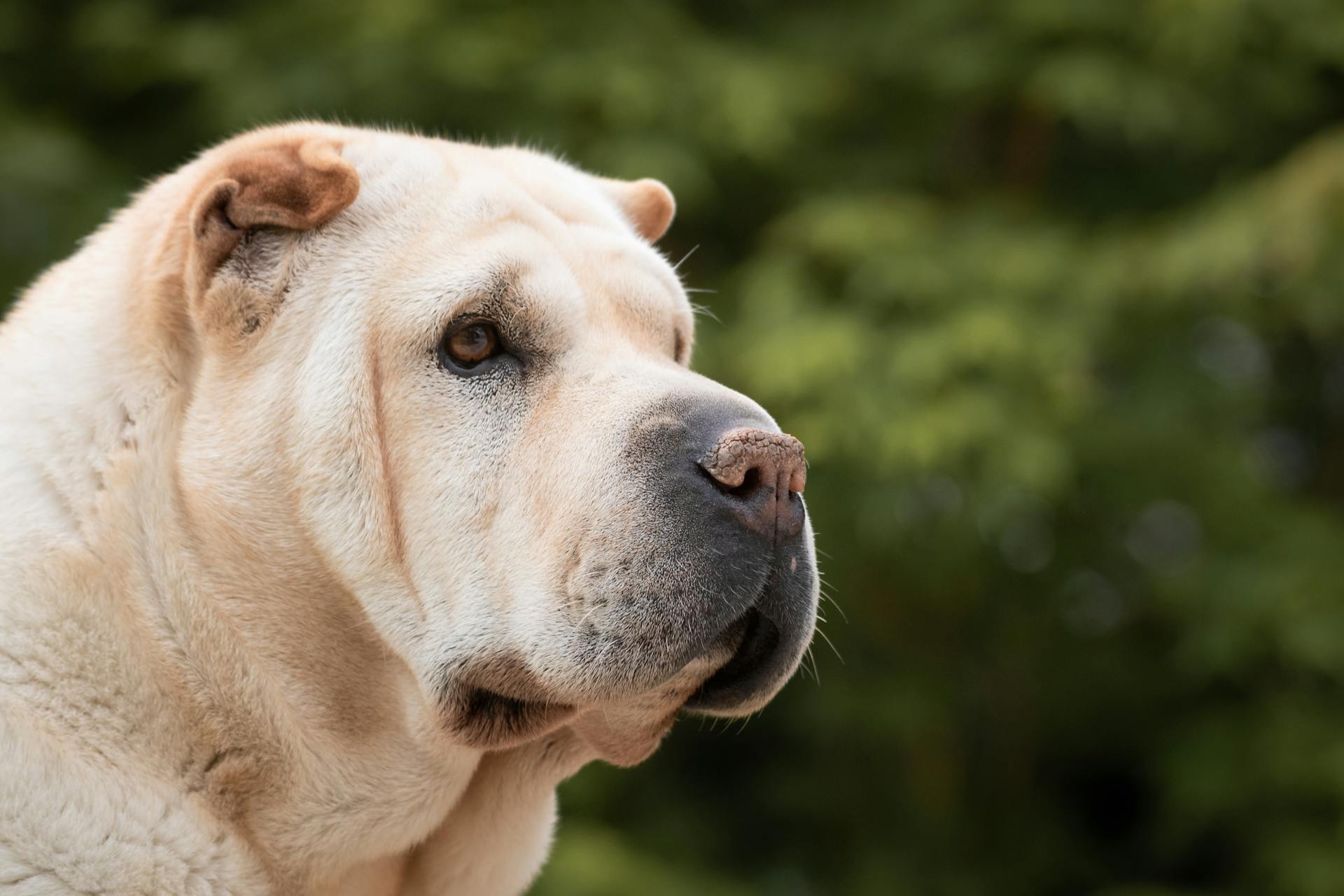
Skin cancer can be a serious issue for dogs, and it's essential to be aware of the causes and signs to catch it early. According to research, one of the most common causes of skin cancer in dogs is exposure to the sun, with UV radiation playing a significant role in the development of skin tumors.
Dog owners should be on the lookout for any unusual lumps or growths on their pet's skin. These can be a sign of skin cancer, and prompt veterinary attention is crucial. Skin cancer can appear anywhere on the body, but it's most common on areas with little hair, such as the nose, lips, and ears.
Some breeds are more prone to skin cancer than others, with fair-haired and light-skinned dogs being at a higher risk. This is because their skin has less melanin, which provides natural protection against UV radiation. Regular grooming and sun protection can help prevent skin cancer in dogs.
What is Skin Cancer in Dogs
Skin cancer in dogs can be a serious health issue, and it's essential to recognize the signs and symptoms early on. A black mole on your dog, for instance, could be a sign of skin cancer.
Some common types of skin cancer in dogs include melanoma, squamous cell carcinoma, and basal cell carcinoma. These types of cancer can develop on the skin's surface, leading to lumps or growths.
A skin cancer lump on your dog can be caused by a variety of factors, including genetics, exposure to the sun, and certain breeds being more prone to skin cancer. If you notice a lump on your dog's skin, it's crucial to have it checked by a veterinarian.
Skin cancer in dogs can be treated with surgery, chemotherapy, or a combination of both. The treatment options will depend on the type and severity of the cancer, as well as the dog's overall health.
Early detection is key to treating skin cancer in dogs effectively. If you notice any unusual lumps or changes in your dog's skin, consult with a veterinarian right away.
A different take: Types of Dog Cancer Pictures
Identifying Skin Cancer in Dogs
Regular grooming sessions are a great opportunity to get familiar with your dog's skin, including all the lumps, bumps, and rashes.
Twice yearly wellness examinations at your dog's primary care veterinary clinic give your vet a chance to monitor your dog's overall health and watch for unusual lumps and bumps.
If you notice an unusual lump on your dog or swelling around your dog's toes, consult your veterinarian, it's always better to err on the side of caution.
Some common signs of skin cancer in dogs include inflamed, rubber-like sores (mast cell tumors), firm, raised wart-like blemishes (squamous cell carcinomas), and strange-colored bumps or lumps on the toenail beds, mouth, lips, or pads of feet (melanomas).
A body map can be performed by your veterinarian, and/or photographs taken, to help track the skin growths that have been evaluated over time.
You can help monitor for new skin cancers by regularly running your hands over your pet to check for any skin masses or lesions.
Suggestion: Dog Hives Allergic Reaction Staffy Skin Bumps
Signs and Symptoms
As you monitor your dog's skin for signs of cancer, it's essential to keep an eye out for abnormal bumps and lumps that can appear as your dog ages.
Be aware of any indications that your dog is feeling pain, such as a limp, which can be a sign of skin cancer.
Inflamed, rubber-like sores, often associated with mast cell tumors, can be a common symptom.
Firm, raised wart-like blemishes, characteristic of squamous cell carcinomas, are another possible sign.
You should also be on the lookout for strange-colored bumps or lumps on the toenail beds, mouth, lips, or pads of feet, which can be indicative of melanomas.
Some common symptoms to watch out for include:
- Indications that your dog is feeling pain, such as a limp
- Inflamed, rubber-like sores (mast cell tumors)
- Firm, raised wart-like blemishes (squamous cell carcinomas)
- Strange-colored bumps or lumps on the toenail beds, mouth, lips or pads of feet (melanomas)
Checking Pet Health
Regular grooming sessions are a great opportunity to get to know your dog's skin and watch for any unusual lumps or bumps.
Take the time to familiarize yourself with all your dog's lumps, bumps, and rashes.
Twice yearly wellness examinations at your dog's primary care veterinary clinic give your vet the opportunity to monitor your dog's overall health and watch for usual or specious lumps and bumps.
Readers also liked: Dog Breeds Watch Dogs
If you notice an unusual lump on your dog or swelling around your dog's toes, consult your veterinarian.
You can help monitor for new skin cancers by regularly running your hands over your pet to check for any skin masses or lesions.
A body map can be performed by your veterinarian, and/or photographs taken, to help track the skin growths that have been evaluated over time.
Diagnosis and Treatment
Diagnosis of a skin cancer lump on your dog typically starts with a fine needle aspiration to take a small sample of the tumor's cells for examination. Your vet may also perform a biopsy to take a portion of the tumor's tissue to be examined.
The samples taken will be sent to a lab for analysis to provide an accurate diagnosis. Your vet will use the results to determine the extent of cancer in your dog's body.
Depending on the type and location of the tumor, your vet may recommend additional diagnostic testing to optimize treatment recommendations and predict prognosis. This can help ensure your dog receives the best possible care.
On a similar theme: Vets Dog Treats
Diagnosing

Diagnosing your dog's skin cancer typically involves a fine needle aspiration or biopsy to collect a sample of the tumor's cells or tissue for examination.
Your vet may suspect skin cancer if your dog has a suspicious growth or lesion. They'll use a fine needle to take a small sample of the tumor's cells.
The sample will be sent to a lab for analysis to determine the type and extent of the cancer. This is a crucial step in providing an accurate diagnosis.
Additional diagnostic testing may be required to determine the extent of cancer in your dog's body.
Treating
Treating skin cancer in dogs requires a thorough understanding of the type of tumor and its location. Your vet will assess your dog and perform diagnostic tests to determine the proper treatment.
Surgery may be an option for treating skin cancer in dogs, depending on the type of tumor and its location. Chemotherapy and radiation therapy may also be used to treat the cancer.

The prognosis and treatment of cancer in dogs depend on the type of cancer, the tumor's location, and how advanced the cancer is. Many dogs with early-stage skin cancers can be treated successfully.
Immunotherapy and targeted therapies are also treatment options for cancer in dogs. Palliative care is another option when the cancer is advanced and treatment is focused on managing symptoms.
Frequently Asked Questions
Are cancer lumps on dogs hard or soft?
Cancerous lumps on dogs are typically hard and firm to the touch, unlike soft and fatty lipomas. If you suspect a lump on your dog, it's essential to have it evaluated by a veterinarian to determine its cause.
What does a cancerous skin tag look like on a dog?
A cancerous skin tag on a dog typically appears as a raised, irritated, red, and often ulcerated lump on the skin. If you suspect a skin growth on your dog, consult a veterinarian for a proper diagnosis
Is skin cancer in dogs fatal?
Skin cancer in dogs can be non-life-threatening if caught early, but malignant tumors can significantly impact life expectancy
How long can a dog live with skin cancer?
Dogs with skin cancer can live up to 36 months with immediate surgical removal, but the average survival time is around 10 months. Early treatment is crucial for improving a dog's chances of survival.
What color is skin cancer in dogs?
Malignant melanoma in dogs typically appears as brown or black raised lumps on the skin. It can also appear in shades of gray or pink, especially in the mouth.
Sources
- https://www.lakecross.com/site/blog-huntersville-vet/2020/08/20/about-skin-cancer-dogs-symptoms-causes-treatment
- https://www.embracepetinsurance.com/waterbowl/article/skin-cancer-in-dogs-and-cats
- https://www.mooresvilleanimalhospital.com/site/blog/2020/06/11/dogs-skin-cancer
- https://www.vetniquelabs.com/blogs/vets-corner/how-to-prevent-skin-cancer-in-dogs-vetnique
- https://www.thepetoncologist.com/blog/skin-cancer-in-pets
Featured Images: pexels.com


